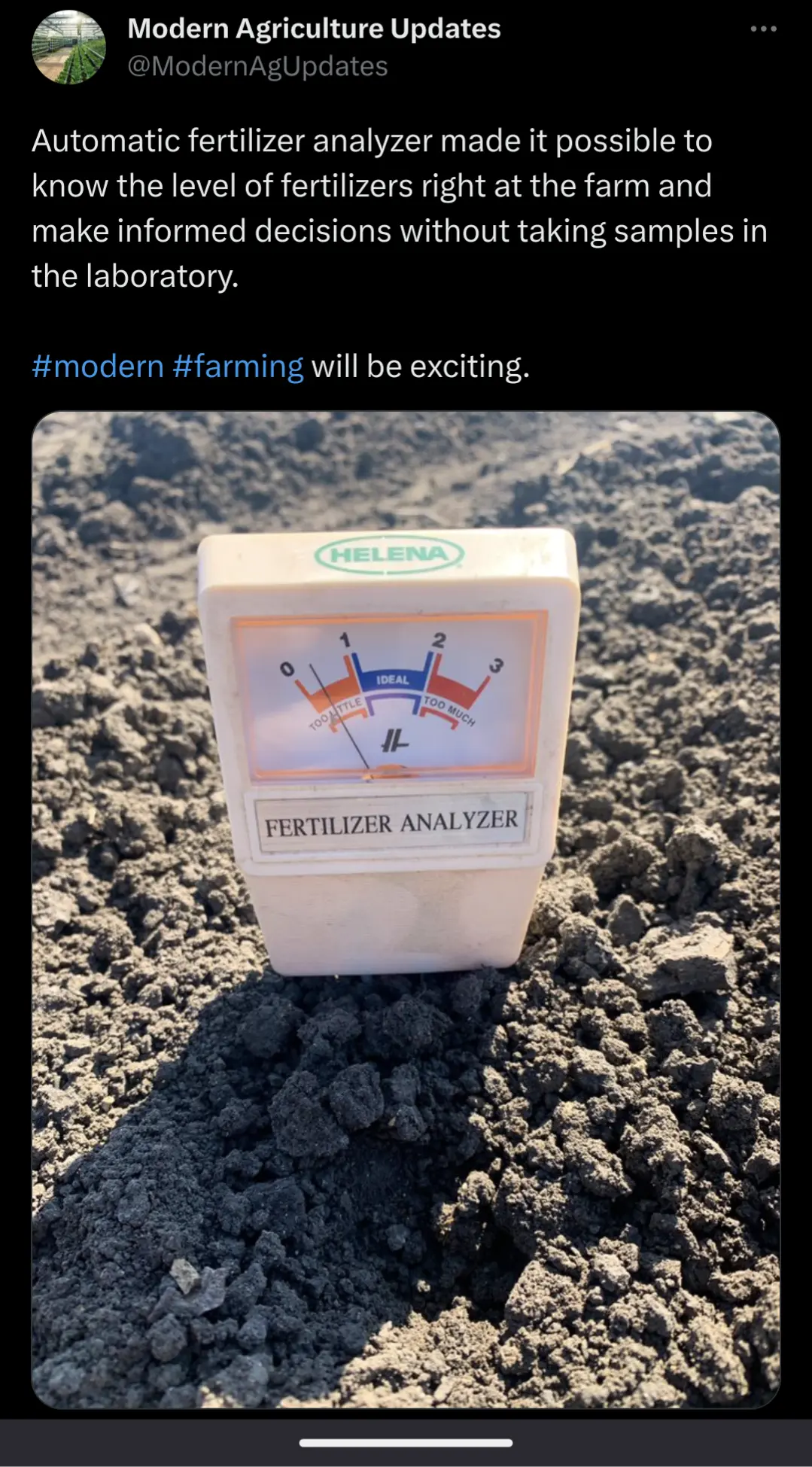this post was submitted on 12 Sep 2023
52 points (96.4% liked)
Gardening
542 readers
1 users here now
founded 4 years ago
MODERATORS
you are viewing a single comment's thread
view the rest of the comments
view the rest of the comments

Ok, this is a rough science and likely very inaccurate with the pictured device.
Different nutrients in soil can alter electrical signals passed between two or three different probes that are on these kinds of devices. That can be measured and approximate nutrient content can be calculated.
Proper nutrient testing summary: https://www.agrifarming.in/importance-of-nutrient-sensors-in-agriculture-advantages-and-working-principle
Since the pictured device is likely under $5, I would speculate that it has you wet the soil first before the probe is inserted. Nutrient salts can change the conductivity of water and it is trivial to amplify any change in resistance or capacitance on one of those types of needle meters. It only takes a tiny amount of current. The probes themselves could act as a battery of sorts, similar to how you can make a simple battery with a potato. (I would guess we are around 1mA or less with this setup.)
It's not a great solution, it's prone to false readings but its approximate enough for the home gardener. At the very least, you know the soil conductivity: More conductivity is sometimes better than less.
Edit: Looking at that picture, the soil doesn't look very wet to me. It could explain the "lack of nutrients".
I have a small handful of plants. It's good enough for me. I completely agree that if it were my livelihood I would be sending it off to a lab. If something happens to my garden I get less salsa and have to buy tomatoes at the store. If something happens to a farm they're fucked for the year unless they get on top of it.
I haven't ever seen those nutrients sensors you link to, and I'm highly suspect. The closest thing I've seen are XRF guns and those are for metals.
The whole fertility sensor/probe thing is a pipe dream IMO. Soil heterogeneity is tremendous.
If you want an accurate reading, a lab is a must. Even then, parameters such as soil texture can vary by 10 to 30%
And electrical conductivity is never good. It's routinely screened for along with SAR
Oh, that $5 piece of crap is absolutely telling you a number that has very little value. If you use it properly and the needle pegs in one direction or another, you probably want to invest in a decent test. (Even pegging that needle doesn't mean much, TBH.)
ISM sensors are typically used in hydroponics for disolved O2 and are "decently" priced. The ones that are available for nitrates and such are generally considered lab equipment and are not cheap.
This meter is not for the application we are taking about, but it's close enough: https://www.hannainst.com/nitrate-photometer-hi97728.html
Totally agree. Send it to a lab if you need real results.